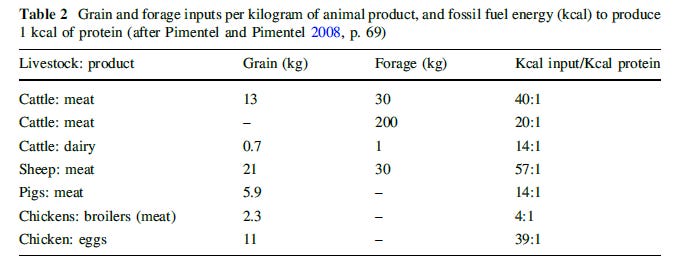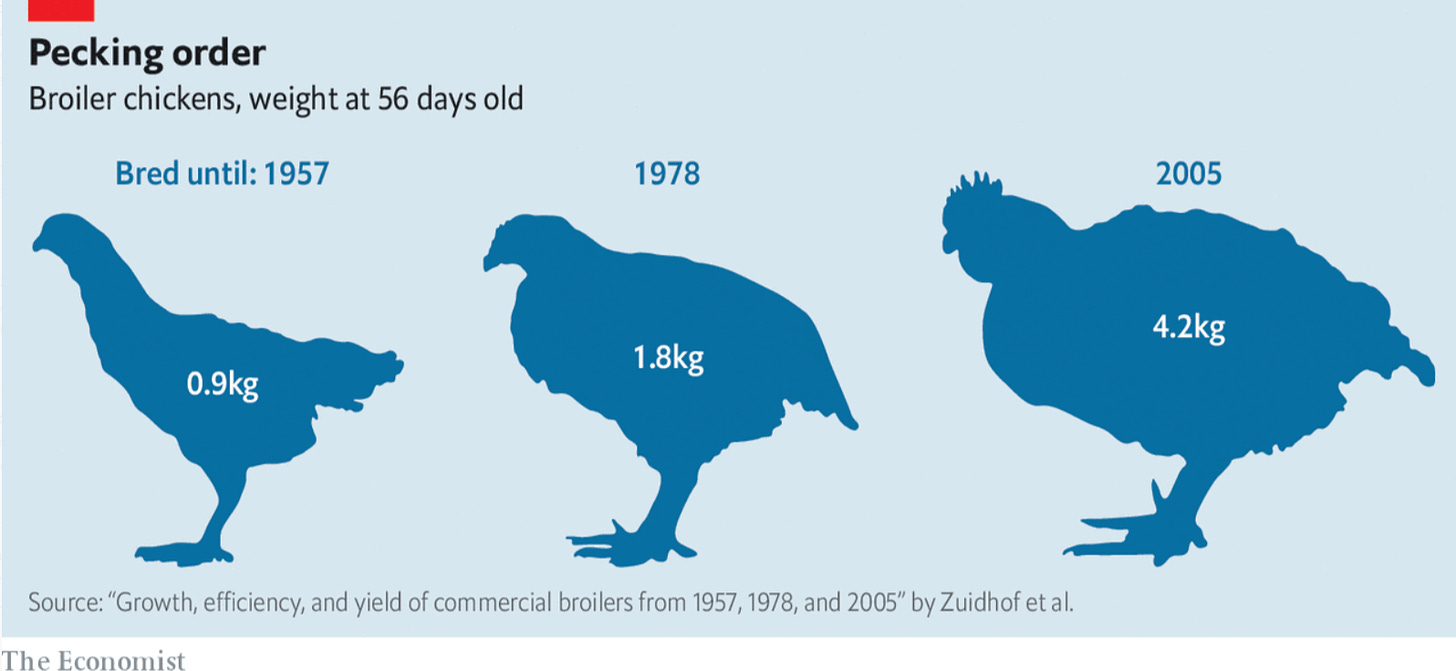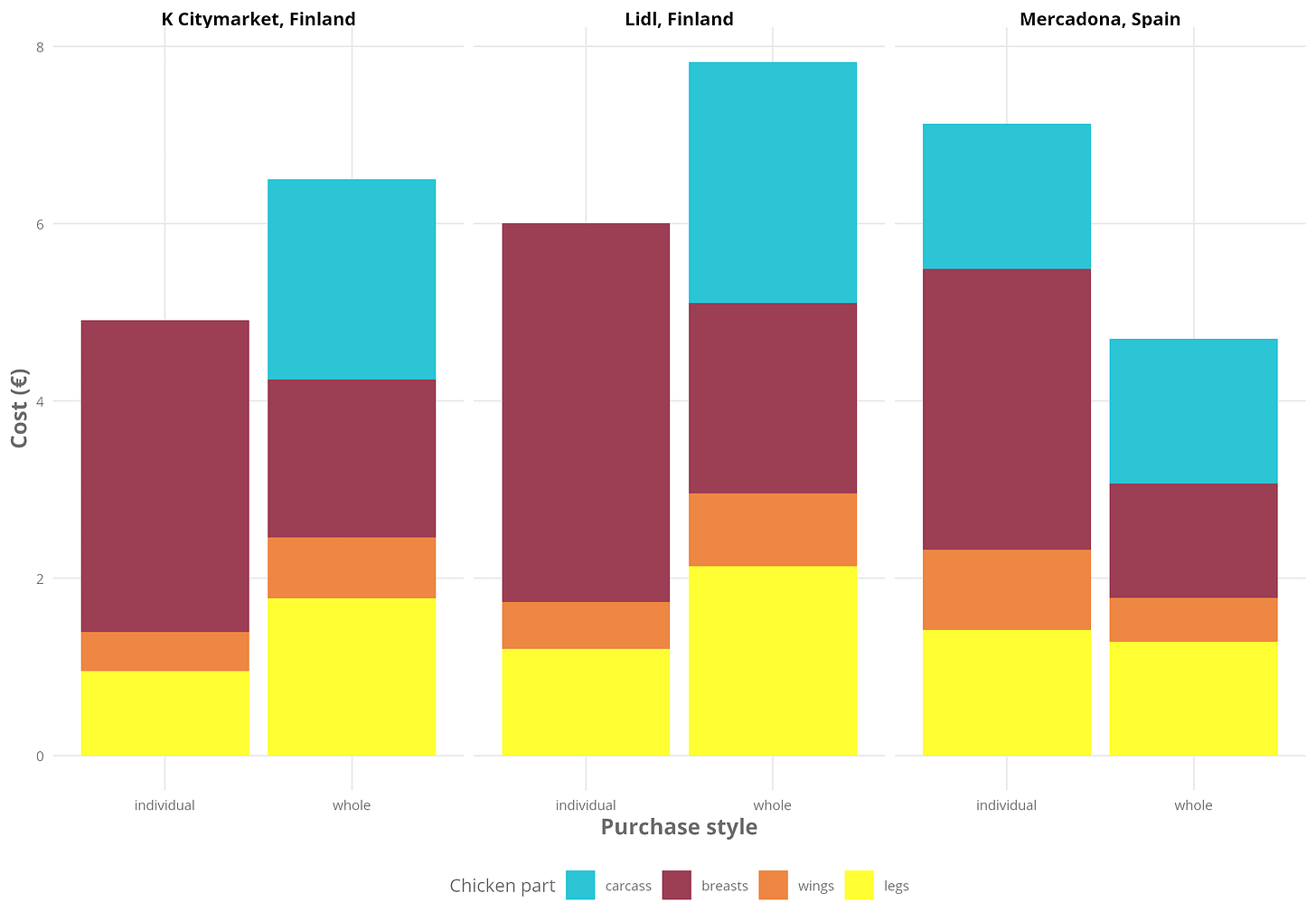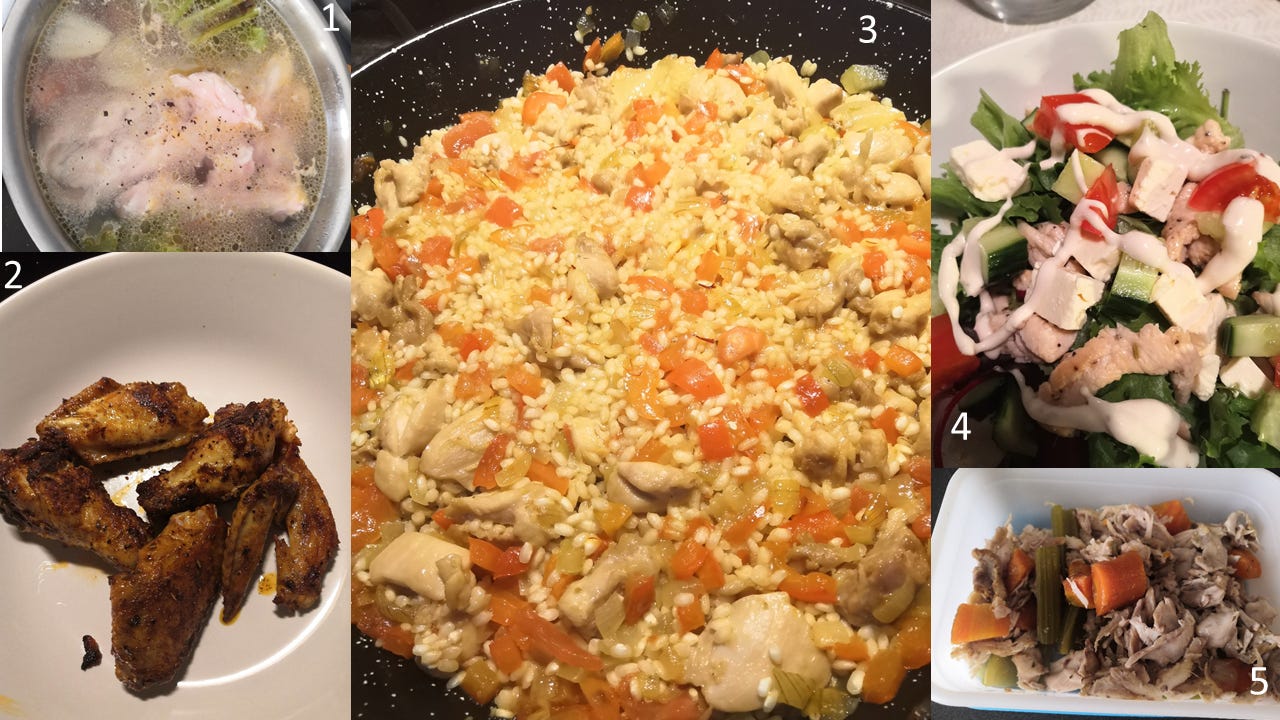Datata #2: Don't chicken out
The absurdity we have reached where we trade our time for commodity in the expense of money and plastic waste, taking chickens as an example, and showing graphs and data.

Our grandparents used to live a very different life. You could even say a simpler life, albeit not an easier one necessarily. They either were growing their own food or knew where the food was coming from. No endless supermarket aisles full of tens of the same products from different brands.
My grandfather used to have chickens at home for our own consumption. Every Sunday we would gather together and eat a beautifully roasted chicken. I am spoiled now and no chicken tastes as good as those. My goal with this newsletter is to show you the absurdity we have reached where we trade our time for commodity in the expense of money and plastic waste, taking chickens as an example.
Let's go back in time, chicken was domesticated first over 8000 years ago. Chickens are a great and efficient source of protein 1.

They can live in cramped urban spaces and convert food scraps into protein on top of giving eggs, and at the same time they are smaller than pigs. This was a good thing many years ago, since in hot climates it reduces the changes of the meat going bad since you consume it quickly once the chicken is butchered.
However, the chickens today are not what they used to be in the past, due to intensive breeding broiler chickens were introduced, which grow faster and bigger than ever before.

The growth is that big that they cannot live over their planned estimated life, since growth is too big to support their own weight. Lifespan nowadays can vary between 35-40 days before they are butchered, against 81 for organic chicken2.
By extensive breeding the goal has been to increase the amount of meat, thus making it more profitable for the companies since they produce much more meat than they cost to feed.
"If you kill an animal, you should eat all of it. It's only polite" - Fergus Henderson.
In his restaurant St John's Fergus educates the guests on the "nose to tail" eating, honoring the animal by eating pretty much all its parts, he believes in leaving nothing behind. I remember eating the chicken neck, claws and gizzard when my grandfather used to have chickens at home.
Nowadays in most of the supermarkets and specially in Finland, it is very difficult to find a whole chicken with most parts of it. I don't know where those other parts go, but I can tell you they are delicious if cooked correctly, it's only polite not to waste meat of an animal that has lived with the sole purpose of feeding you.
Let's start by answering the question: Is it cheaper to buy a whole chicken that the different parts separately? To answer that question, I bought a whole chicken in Lidl (Finland) and measured the weight of the different parts, then calculated the proportion of weight and compared that with the individual parts price/kg. I did this for 3 different supermarkets.

Some interesting findings:
· Wings are so cheap that they are cheaper to buy separately (due to their price/kg being lower than the whole chicken price/kg)
· In Finland you can't really buy the carcass separately, while you can buy it in Spanish supermarket Mercadona. If it wasn't for the carcass buying whole chicken is cheaper (plus carcass is great to make a beautiful stock).
You might also argue that the bones take big part of the weight of the whole chicken, but based on my calculations, bones and skin only represent 16.4% of the total weight.
So, depending on how you measure you could say that buying a whole chicken is cheaper or more expensive, but what about the environment?
Individual parts of chicken come in individual packages that are heavier than the whole wrapping for the whole chicken, in the case of Lidl, 10 grams for the wrapping plastic of the whole chicken VS 31gr for a single package of one individual part. So, if you were to buy breasts, wings and legs separately you would have almost 10 times more plastic waste. The reality is that most of us buy parts individually because it is convenient and we only need one part to make the recipe.
With more parts comes more versatility. You can roast the whole chicken, or use it to make multiple different dishes as I did. Here is a list of what I prepared with a 1.5kg chicken:

- Chicken broth: Roasting the carcass with some vegetables and boiling it with salt and pepper, used to cook paella.
- Chicken wings: Marinated overnight with olive oil, paprika, thyme. Cooked on a pan.
- Paella: With the broth, onions, tomatoes and deboned chicken thighs and legs for a simple and delicious paella.
- Chicken salad: Dicing the breasts, add lemon-pepper mix and salt, I cooked and put them on a salad.
- Broth byproduct: In the boiled carcass there is meat that can be eaten together with the broth vegetables, you can eat as it is, mix with other dishes or give it to your dog.
- Bonus: You can render the skin fat to obtain some crispy chicken skin snack.
All these 5 recipes were done by using the whole chicken (7.87€), few vegetables and spices. It took me just 2minutes 42 seconds to butcher the whole chicken.
Finally, I find an inherent pleasure in cooking, it is like meditation and a fun activity to do together. When cooking, you just cook, you care for nothing but the cooking.
A restaurateur is someone who restores people, nourishes them. And I find that magical, to spend your time restoring others and yourself. Are we really so busy we cannot take a bit of extra time to enjoy cooking and bringing joy in form of healthy food?
If you like the concept of buying a whole chicken next time, you can start with this video.
Glad to see you here, remember that you can always reply to start a conversation :)
See you next month!